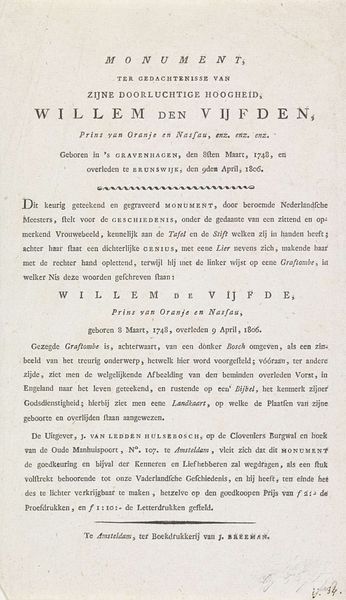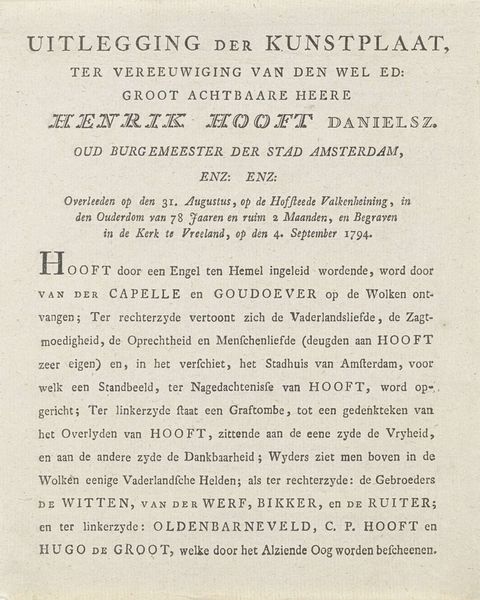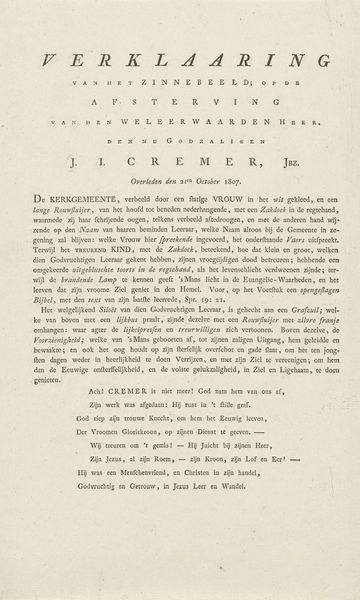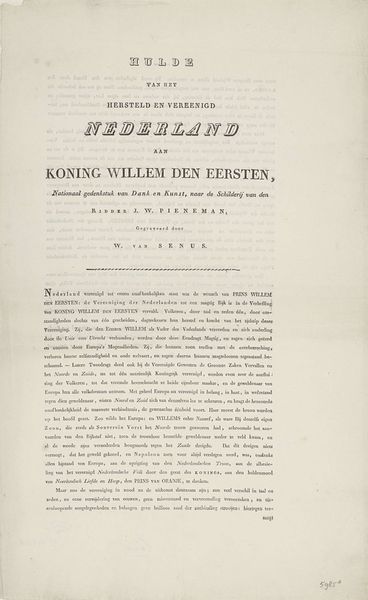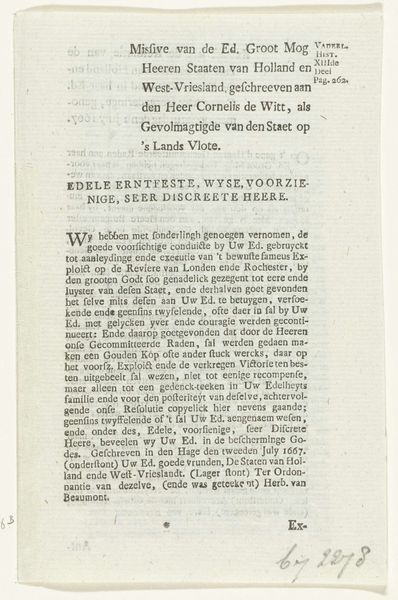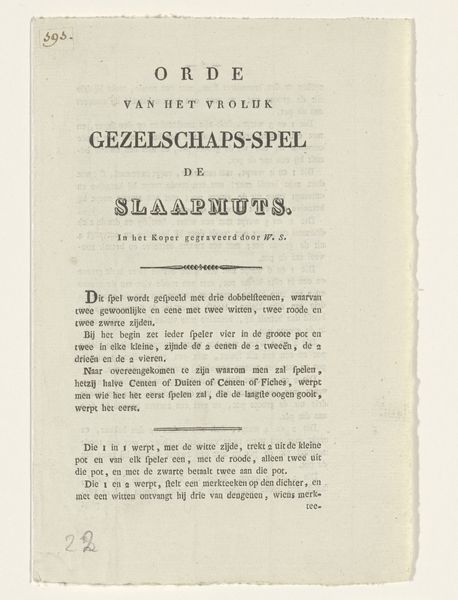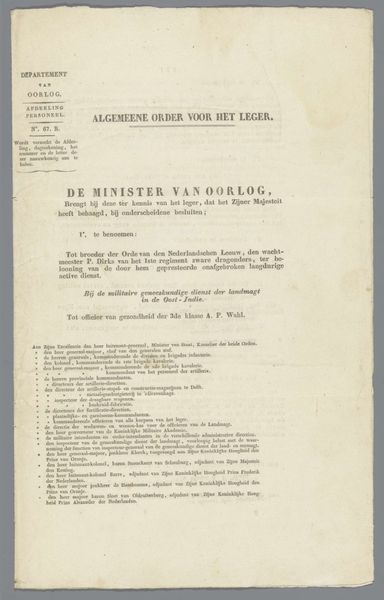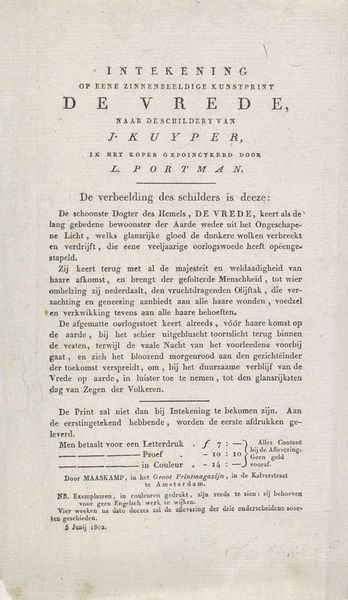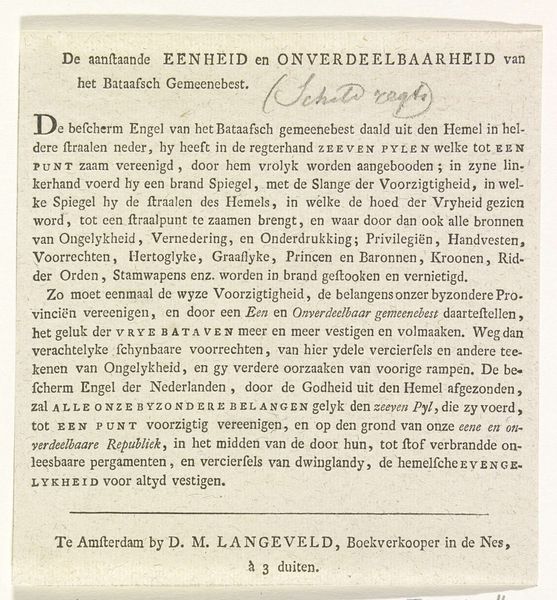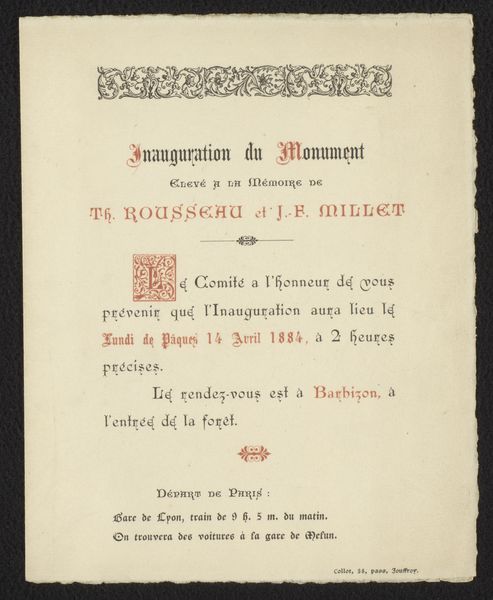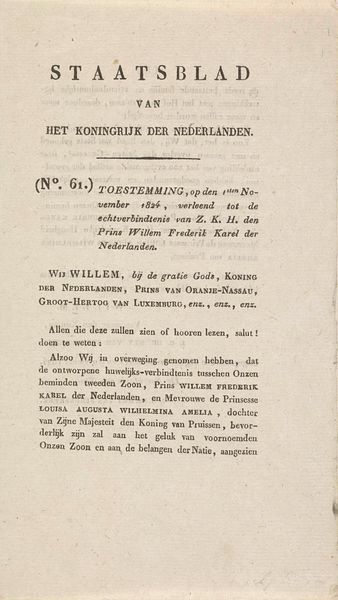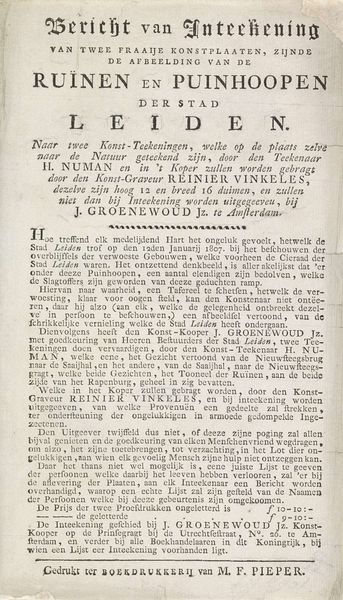
Tekst bij het grafmonument voor Engelbrecht II, graaf van Nassau-Dillenburg-Breda, 1504 1824 - 1847
0:00
0:00
print, paper, typography
#
portrait
# print
#
paper
#
text
#
typography
Dimensions: height 202 mm, width 133 mm
Copyright: Rijks Museum: Open Domain
Editor: We’re looking at a print from sometime between 1824 and 1847, titled "Tekst bij het grafmonument voor Engelbrecht II, graaf van Nassau-Dillenburg-Breda, 1504." It’s essentially a page of dense text. I'm struck by how official and almost legal it looks, even though it's about a grave. What do you see when you look at this? Curator: This is a fascinating artifact because it reflects a very specific historical moment of national identity formation intertwined with class and power. The text itself becomes a monument. This proclamation performs power by connecting William I, seen here as the founder of the Dutch state, to the noble lineage of Engelbrecht II. How might understanding this text as a *performance* change how we see it? Editor: Performance in what way? It seems more like an informative document, listing facts. Curator: But is it neutral? Note how it positions the House of Nassau as central to the region’s power for generations *before* William I. By emphasizing the lineage and marital alliances of Engelbrecht, particularly his marriage to Johanna, the text constructs a historical narrative that legitimizes later political structures, including inherited power and wealth. It’s less about historical accuracy, more about crafting a legitimizing myth, don't you think? It tells the history from a certain vantage point that actively includes and excludes in ways that shape future views on who held authority. Editor: I see what you mean. It's less about Engelbrecht as a person, and more about using his name and his lineage to reinforce certain power structures that continued for hundreds of years after his death. The language used almost creates a hallowed feel as one reads the description of the land and people over which Engelbrecht reigned. It almost seems like a warning to not make waves... or something along those lines. Thank you! Curator: Precisely! And that carefully constructed historical narrative can be a powerful tool for solidifying political ideologies. Reflecting on this document’s role helps us unpack those ongoing impacts of political ideologies.
Comments
No comments
Be the first to comment and join the conversation on the ultimate creative platform.
